Paul Gartside originally produced his Beach Cruiser, Design #226, in 2017, “as a fast, light, lug-and-mizzen boat at 17′ overall for a fellow on the coast of Texas.” The following year, for a customer in California, he built a 16′ version with a gunter main, jib, and mizzen: Centerboard Yawl, Design #226A. In 2022 that 16-footer appealed to Andy Weimer of Zurich, Switzerland, when he enrolled at the Boat Building Academy (BBA) in Lyme Regis, England. “I liked the shape of the hull and the plumb stem—I am a bit of a sucker for West Country working boats—but I didn’t like the gunter-yawl rig, so I asked Paul if he could draw a gaff rig with a topsail and bowsprit.” Paul obliged and the result, the Centerboard Sloop of Design #226A, is the same 16′ hull as the Centerboard Yawl, but with the mast and centerboard moved forward to balance the new rig.
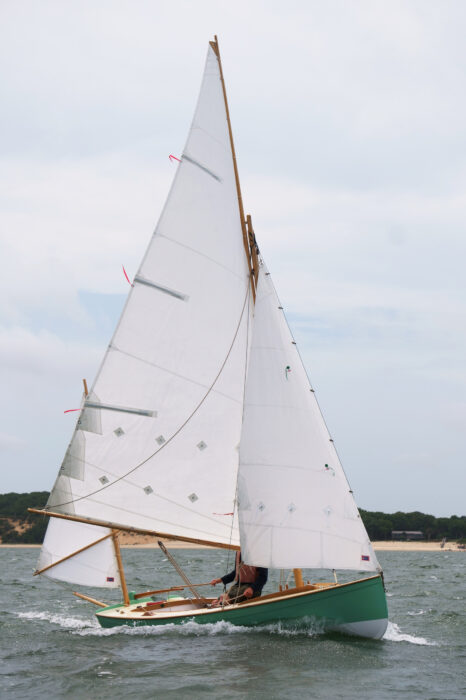 Courtesy Paul Gartside
Courtesy Paul GartsideDesign 226A was originally conceived as a yawl with a gunter-rigged mainsail, overlapping jib, and leg o’ mutton mizzen set to a short boomkin. Paul Gartside drew a new gaff-sloop sailplan for Andy Weimer.
Paul specified edge-glued carvel strip-plank construction for the 16-footer designed for Andy. While both previous versions of the #226 were strip-planked, Paul noted “strip-planked construction has its place (working best on long, narrow hulls) but is very much an amateur method. Edge-glued carvel is structurally the same thing but just looks a lot better with plank lines in harmony with the hull shape. We wanted a varnished interior on that boat, so it was important. I suggested Andy do the same thing on his as it would be a more profitable learning experience. Lining out and then backing out and rounding planking are useful skills to acquire.”
The five sheets of plans supplied by Paul consisted of a sail plan, lines plan, table of offsets, setup plan, and a construction plan with scantlings and suggestions for materials.
As required for student projects at BBA, Andy started with lofting, and from there the nine building molds, the transom, and a template for the stem were produced. Although the plans show the inner stem in three pieces of solid pine, it was thought that it would be stronger if laminated in one piece. The outer stem (specified as laminated in the plans) and the inner stem were laminated together using 1⁄8″ sapele veneers with sheets of polyethylene separating the two elements.
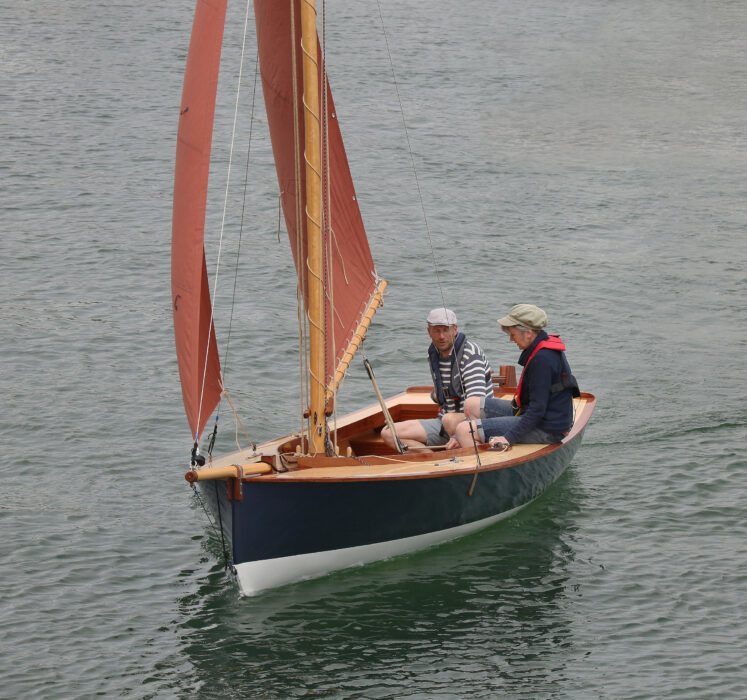 Nigel Sharp
Nigel SharpThe plumb stem, short bowsprit, and tan-bark sails all reflect the influences of Andy’s much loved small traditional working boats from England’s West Country.
Once the molds and transom were secured upside down on a building base, the keel was laminated over the molds from 5⁄8″ sapele (two laminations over the whole length and up to five where the extra thickness is needed aft of the centerboard trunk) and then removed after the glue had set. The shaped inner stem was fitted into notches in the forward two molds and then the 5⁄8″-thick single-piece sapele hog/keelson was scarfed to it and laid into notches in the remaining molds and transom. Battens were used to line-off the planking on the stem, molds, and transom.
After carrying out some experiments it was decided that, rather than starting with thicker timber for the planking and then hollowing out the inside faces to match the shape of the molds and later doing a major fairing job on the outside, the curves across the grain would be achieved by steaming the planks. This allowed the use of 3⁄8″-thick timber, which came out of 16′ × 8″ × 1⁄2″ yellow cedar. The stock was long enough to make one-piece planks for six strakes and the remaining three strakes required planks in two pieces scarfed together.
The planking started with the garboard and the sheerstrake and then progressed down and up toward the shutter plank. The garboard and sheerstrake were epoxied to the stem and transom (and the garboard also to the hog); subsequent planks were also edge-glued to each other. There were nine planks each side. The garboard and two adjacent planks had to be steamed at their forward ends to cope with the twists at the bow.
The outside of the hull was sanded fair with long boards. A 2″-wide by 1⁄8″-deep rebate was machined into the perimeter of the transom face to allow the hull’s sheathing of 6-oz ’glass and epoxy to be extended into it. After being shaped, the keel (with the centerboard slot already cut into it) and the outer stem were fitted. While the plans specified a 1⁄4″ outer plywood face to cover the transom’s ’glassed perimeter and provide a smooth, flat exterior surface, Andy had some nice-looking 1⁄8″ sapele veneer on hand that would do the job, and vacuum-bagged it to the transom; the sapele had an attractive color and grain. The ’glassed hull was then faired, coated with five coats of primer, and the transom was finished bright. After the hull was turned right side up the molds were removed and the inside of the hull was sheathed in 123gm/m2 ’glass and epoxy.
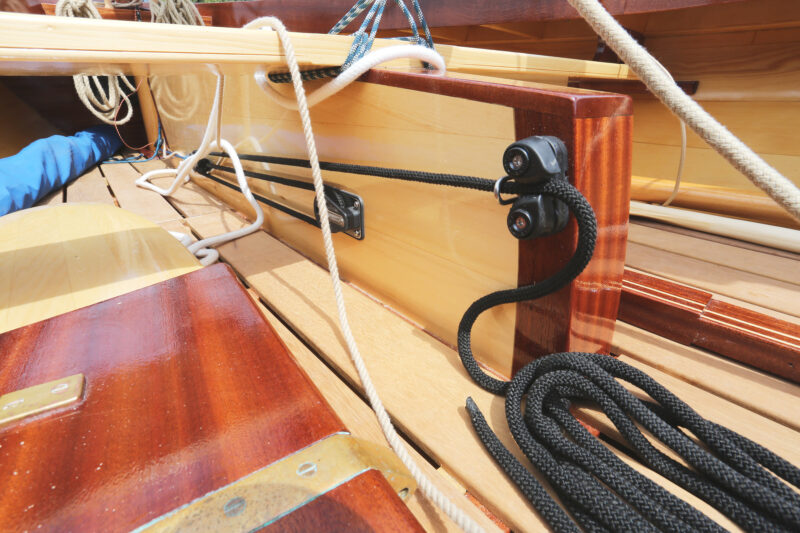 Nigel Sharp
Nigel SharpThe contrast in wood tones is particularly evident in the centerboard trunk—the sides are 7/8” yellow cedar, while the top cap and end pieces are sapele. The curved face of the laminated aft end piece reflects the shape of the bottom edge of the centerboard. The double-purchase centerboard uphaul is led aft and cleated off on the port face of the trunk where it is close to hand for the helmsperson.
The sides of the centerboard case were made from 7⁄8″-thick yellow cedar with the logs, end pieces, and top cap in sapele, all biscuit-jointed together. Its aft end piece was laminated to form a gentle curve, partly for appearance but also to match the shape of the bottom of the centerboard itself. After the slot was cut into the hog/keelson, the case was fitted. Nine 1 1⁄4″-thick sapele floors were fitted, three of them were notched into the centerboard case logs. The forward two would later support the maststep while the others would also act as cockpit sole bearers.
The plans call for 1⁄4″ plywood bulkheads to seal two watertight flotation compartments, one in the bow with a 9″ access port, and the other in the stern under the seat and aft deck with a similar port in the deck, though Andy chose to leave the deck uninterrupted.
A central thwart in solid cedar provides seating amidships and braces the centerboard trunk. Between it and the stern seating, Gartside has drawn 3⁄4″ cedar-slat side benches. Andy chose not to fit these as he thought he wouldn’t likely need them.
A deck of 3⁄8″ white cedar is shown in the plans. Andy opted for a 1⁄4″ plywood subdeck supporting a 1⁄4″-thick yellow-cedar laid deck with sapele covering boards. After the kingplank was added, the whole deck was cleaned up and sheathed in ’glass and epoxy.
With the topsides painted, the 1″ × 1 1⁄4″ rubbing strake was fitted (Andy used sapele instead of the locust specified). The strake was bedded rather than glued so it can more easily be replaced if damaged. After the sapele coamings were fitted everything else was varnished. For the sole boards Andy used iroko.
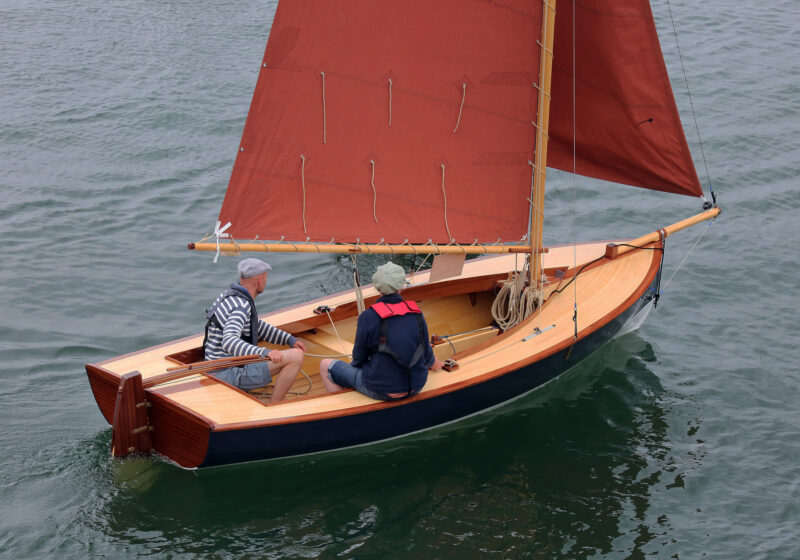 Nigel Sharp
Nigel SharpSeen from above, the unusual line of the cockpit coaming is apparent: its height is reduced aft of the jib-sheet fairleads so that the crew can comfortably sit up on the side deck, but kept high forward to keep water coming over the bow from flowing into the cockpit. Also visible are the darker tones of the sapele rubbing strake, kingplank, coaming, and transom that contrast with and compliment the lighter tones of the yellow cedar.
The 1″-thick rudder blade is laminated from cedar and sheathed and epoxied. The 1 3⁄8″-thick centerboard is shown in the plans as white pine vertical laminates sheathed in Dynel and epoxy and weighted with 25 lbs of lead. The spars are spruce: the 18′ 1″ mast is hollow while the boom, gaff, and bowsprit are solid. Andy made the bowsprit 4″ longer than designed to allow room for a furling gear with the jib tack in designed position and the forestay forward of it.
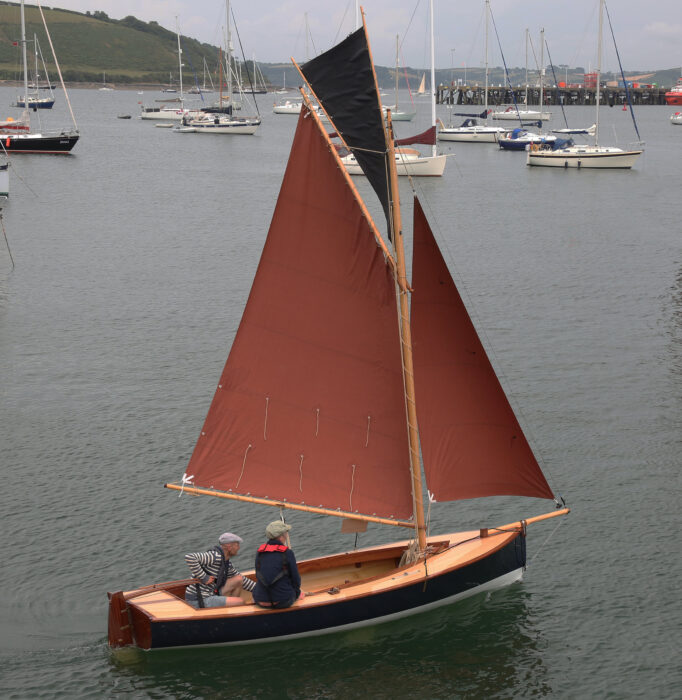 Nigel Sharp
Nigel SharpThe gaff-sloop rig, complete with small topsail, is traditional. The mainsail is low-tech: laced to the boom, gaff, and mast, and reefed with two rows of simple nettles. Less traditional is the jib’s roller furling mechanism, installed by Andy for easier control from within the cockpit. To accommodate the gear but still have the jib tacked to its designed position, Andy lengthened the bowsprit by 4″.
Andy and I took the sloop for a sail on a squally day on the Penryn River near Falmouth, U.K. When trailering the boat, the boom and gaff can fit inside the hull with the mainsail attached to them, while the mast rests in the stern and on a slightly offset mast support at the forward end of the trailer; the bowsprit is left in place. It takes about 20 minutes to step the mast (which Andy has found he can do by himself by initially standing it upright outside the boat), secure the standing rigging with lashings, lace the mainsail’s luff to the mast, and do everything else that is necessary to be ready to hoist the main and gaff, and unfurl the jib. One person can hoist the 1:1 peak and throat halyards simultaneously and, of course, the furling gear for the headsail makes life simpler. We didn’t set the topsail that day, but even with its jackyard and luff pole it can be easily hoisted with its halyard and sheet, and then tensioned with its downhaul.
There was plenty of room for the two of us, but there would also be room for two more people sitting on the central thwart, on the side decks forward, or just on the cockpit sole. I didn’t miss the side benches that Andy chose not to build. In their stead, the side decks certainly offered comfortable seating and good visibility and, with the tiller extension, effective steering.
The wind direction allowed us to sail away from the dock easily; Andy was due to fit oarlocks to allow the boat to be rowed.
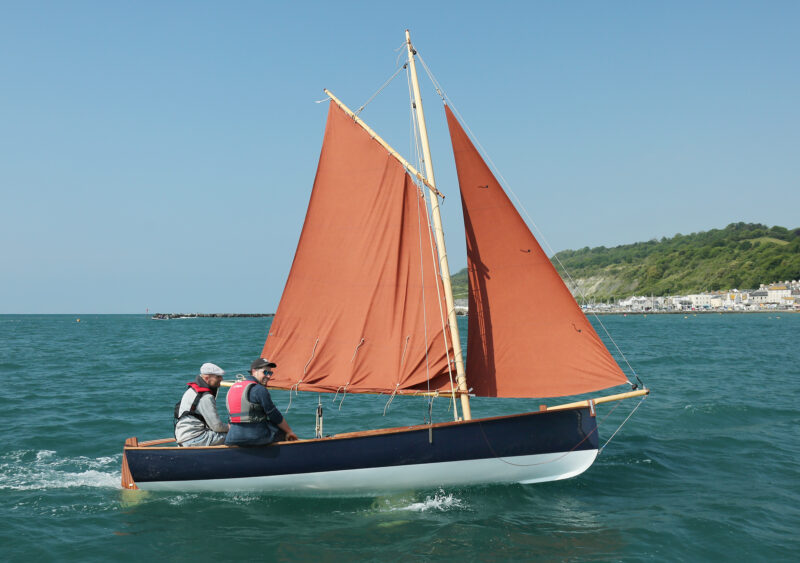 Nigel Sharp
Nigel SharpReefed down on a blustery day, the sloop remains comfortable, heeled but still well-balanced. The fine finish of the carvel-planked hull is testament to the many hours Andy spent fairing and sanding.
The wind strength varied between a gentle 10 knots and a fierce 25 knots and, once we were underway, I initially found myself wanting to play the mainsheet with some urgency in the gusts and lulls, but I soon realized that the boat didn’t heel as much as I expected it to. It accelerated easily in the gusts and, with a reefed mainsail, jib, and no topsail, the helm was neutral. The boat tacked easily with no suggestion that it might get into irons. We were sailing in flat water, but Andy told me that the previous weekend he and a partner had sailed the few miles across Falmouth Bay to the Helford River in a 10- to 15-knot southwesterly and “quite a swell” from the south. He said that the boat slowed down a bit going into the swell on starboard tack but he enjoyed a bit of surfing on port tack and always felt safe. Andy is happy with the Centerboard Sloop’s performance and is looking forward to trailering it home to Switzerland for sails on Lake Zurich.![]()
Nigel Sharp is a lifelong sailor and a freelance marine writer and photographer. He spent 35 years in managerial roles in the boatbuilding and repair industry and has logged thousands of miles in boats big and small, from schooners to dinghies.
Centerboard Sloop Design #226A Particulars
Length overall: 16′ 0″
Beam: 5′ 9″
Depth amidships: 1′ 6 1⁄2″
Draft (board down): 3′ 10″
Sail area: 139 sq ft
Main: 84 sq ft
Jib: 37 sq ft
Topsail: 15 sq ft
Plans for the Centerboard Sloop, Design #226A are available from Gartside Boats for $75 in digital format, $225 printed and shipped.
Is there a boat you’d like to know more about? Have you built one that you think other Small Boats readers would enjoy? Please email us!

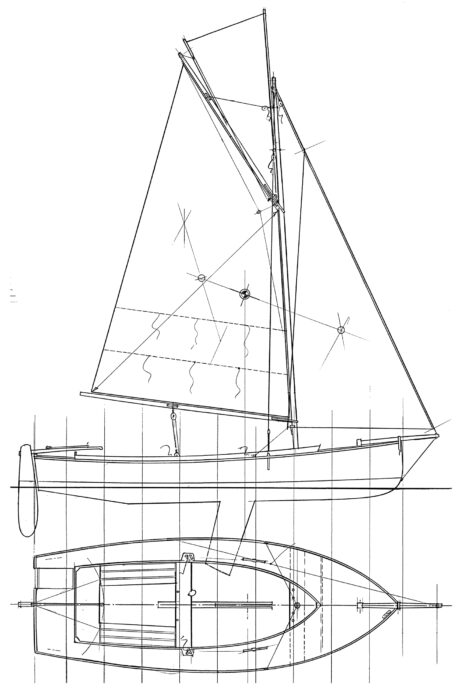
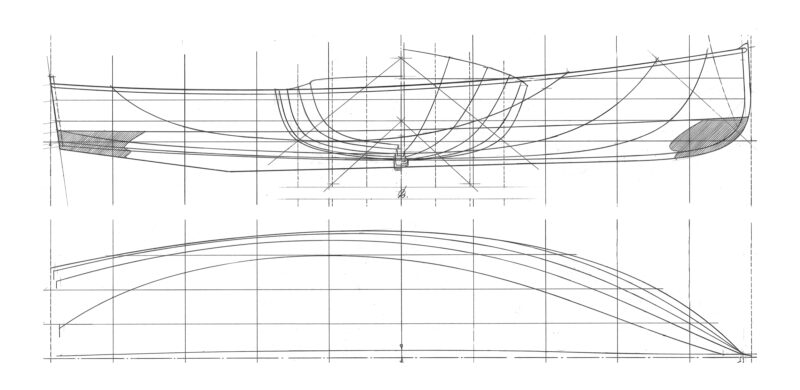
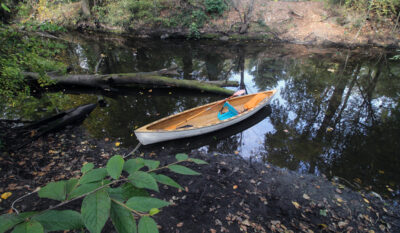


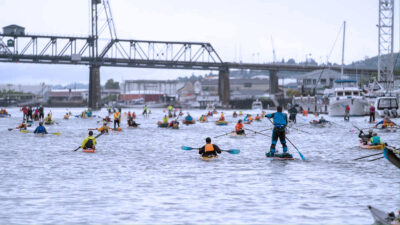
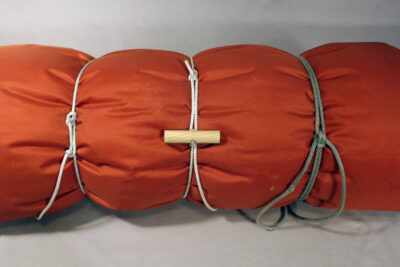
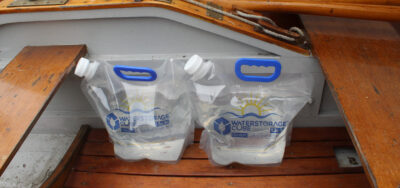
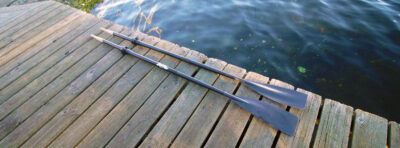
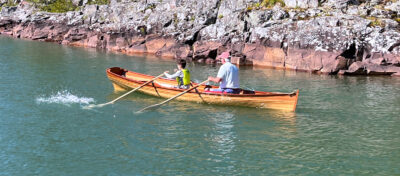
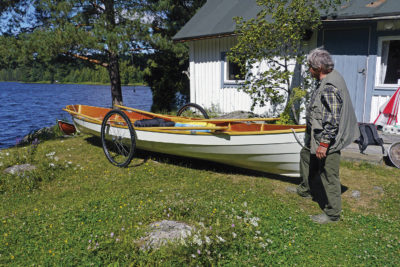
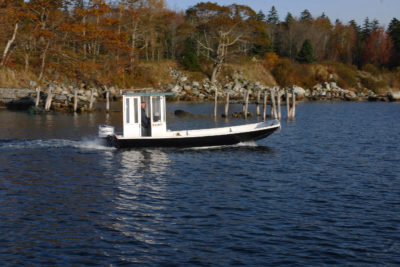

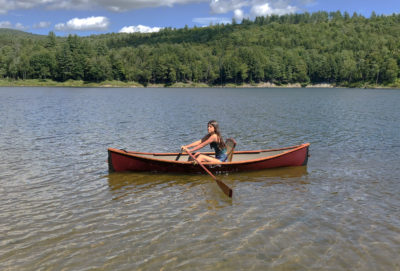
Reading through this might give the impression that I built this all on my own, but I would like to point out that it was only possible to get this boat on the water on launch day with a lot of help from my fellow students at the Boatbuilding Academy, especially Nick and Mark, who were both assigned to this project, and the fantastic support by the tutors giving us the skills: Matt, Rob, Mike (who worked on the boom, gaff and bowsprit with his class), Joe (Centerboard), director Will ( he made all the sole boards until 3am on launch day!) and many other members of staff who kept it all rolling (Jerry & Sam supplying wood, Tim sourcing materials, Mark teaching us to make the sails, Wendy providing tea, Paul making sure everything was up to standards and we passed the exams, Janine pulling the strings in the background… I think this could go on for a while!).
Thank you everyone for that amazing experience!
Andy
Nice looking boat.
Thank you, Bert
This will be my next boat!